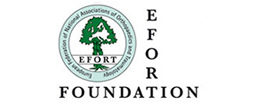Low-grade infections following shoulder and elbow surgeries pose a growing problem that cannot be solved either through standard techniques of disinfection or through arthroscopic surgery, experts told the 16th EFORT Congress in Prague.
Prague, 27 May 2015 – Postoperative infections continue to pose a major challenge in orthopaedic surgery – especially also after shoulder and elbow operations. Dr Robert Hudek from Rhön-Klinikum AG, Bad Neustadt an der Saale, Germany, reported as follows at the 16th EFORT Congress in Prague: “Data from the last 30 years show a postoperative infection rate of 0.4 to 3.8% for the entire spectrum of procedures in shoulder and elbow surgery. For shoulder endoprosthesis operations, for instance, the incidence of infections is 1.1% for anatomical and 3.8% for reverse implants. In the treatment of rotator cuff ruptures, the rate is 0.4 to 1.9%.” For elbow prostheses, the average is 3.3%.
The socio-economic effects are considerable. Dr Hudek: “In England alone, the additional costs for all hospital-associated infections amount to 1.4 billion euros or 1 billion pounds per year.”
The EFORT Congress is the most important conference for orthopaedists and trauma surgeons at the European level, and is held by the European Federation of National Associations of Orthopaedics and Traumatology. „Infections in orthopaedics“is the main theme of this major scientific event, which attracts more than 7,000 participants from all over the world to the Czech capital.
As an expert in shoulder surgery, Dr Hudek noted a special aspect in this context: “In shoulder and elbow operations, we increasingly face a big challenge from low-grade infections in particular. Shoulder and elbow surgeons are devoting more and more attention to the prevention, detection and treatment of these infections as well as of classic infections with typical pathogens such as Staphylococcus aureus or to the problem of increased resistances in the broad-based use of antibiotics.”
Low-grade infections have been a greater focal point of scientific research recently. They develop very slowly and do not show the typical clinical symptoms. In the shoulder area, they lead to stiffness and a high level of pain. Dr Hudek noted that because of these special features, the number of undetected cases might be high: “Low-grade infections of this kind might have been frequently classified as ‘aseptic loosening’ until now instead of as what they actually are, namely a chronic infection.”
Conventional disinfection procedures fail in “low-grade” infections; arthroscopy does not reduce risks
The germs responsible for low-grade infections, most notably Propionibacterium acnes (P. acnes), are inaccessible to conventional skin disinfection, so new approaches and techniques must be developed in this area. It is especially important to bring about a preoperative reduction of the oil gland in the area in which the shoulder joint is accessed or an effective germ reduction during the operation, conceivably by means of frequent antiseptic rinsing for instance. Both procedures have disadvantages, however, and must be critically investigated in randomised studies.
Arthroscopic surgery on the shoulder and elbow is generally deemed to be less susceptible to infection due to the smaller access paths. According to Dr Hudek, this basic rule is very probably not applicable to low-grade infections. He summarised current findings as follows: “In open surgery during an initial surgical procedure on a shoulder, we detected P. acnes intraoperatively in 36 per cent of the cases despite all the preventive measures2. In an arthroscopic surgery we detected it in 56 per cent of the cases.” In other words, he found that arthroscopic surgery is not a sufficient solution for the prevention of infections, noting that “germs are often spread in these cases as well.”
Not all patients in whom the germ is detected actually turn out contracting an infection. Dr Hudek: “There appear to be special subtypes that allow an infection to unfold in one case and not in another.” It is presumed that P. acnes can also be responsible for chronic back pain. In a double-blind, placebo-controlled and randomised study, an antibiotic was given to patients for 100 days who exhibited certain spinal column changes in the MRT and chronic back pain. The results were amazing: The antibiotic had practically healed the test group compared with the placebo group. P. acnes was found in tissue samples from the intervertebral disks. The subtype found in the spinal column was not found in other tissues. Thus, there appear to be more aggressive versions about whose pathomechanics we know very little as yet.
Reliable prophylactic measures
The use of certain disinfectants or the preoperative bathing of patients does not appear to have any relevant influence on the infection rate in general for operations. More recent results about infection prophylaxis for shoulder and elbow surgery show, however, a trend toward meticulous cleaning of the skin, restraint in the use of preoperative shaving and well-timed administration of prophylactic antibiotics. Compliance by hospitals is much higher in this area in particular.
Based on his own data, Dr Hudek said the use of iodine impregnated incision drapes and a laminar air flow system of sufficient size as well as multiple changes of gloves and surgical drapes can reduce infection rates in shoulder and elbow surgery by about 50 per cent. The expert went on to say: “In a thorough review covering all operations, incision drapes have thus far not been found to have any effect on the infection rate. The relatively high infection rate of up to 1.9 per cent for these procedures might be attributable to the use of non-absorbable material, especially suture anchors in the care of rotator cuff injuries.” He added that the use of multiple suture anchor systems should be critically questioned for this reason.
Greater infection risk for younger and male patients; smokers should quit prior to the operation
“Being male and being younger are proven risk factors for postoperative infections for shoulder prosthetics,” Dr Hudek noted. Another classic risk factor for a postoperative infection is an excessively high glucose level. It should always be less than 180 mg/dl prior to the operation.
Smokers are subject to a much higher risk. Dr Hudek: “For elective procedures, the patient must definitely be told to refrain from smoking for at least four weeks prior to the operation. People suffering from rheumatism show a higher rate of infection owing to their intake of immune suppressing drugs and tissue that is often of poorer quality.” A personalised therapy involving a prolonged use of antibiotics and reduced intake or no more intake of immune suppressive drugs should be planned in these cases in consultation with rheumatologists and infectiologists.
About EFORT
The European Federation of National Associations of Orthopaedics and Traumatology (EFORT) is the umbrella organisation linking Europe´s national orthopaedic societies. EFORT was founded in 1991 in the Italian Marentino. Today it has 45 national member societies from 42 member countries and twelve associate scientific members.
EFORT is a non-profit organisation. The participating societies aim at promoting the exchange of scientific knowledge and experience in the prevention and treatment of diseases and injuries of the musculoskeletal system. EFORT organises an annual congress, seminars, courses, forums and conferences within Europe. It also initiates and supports basic and clinical research.
Source: 16th EFORT Congress. Session „Infections in Shoulder and Elbow Surgery.“


